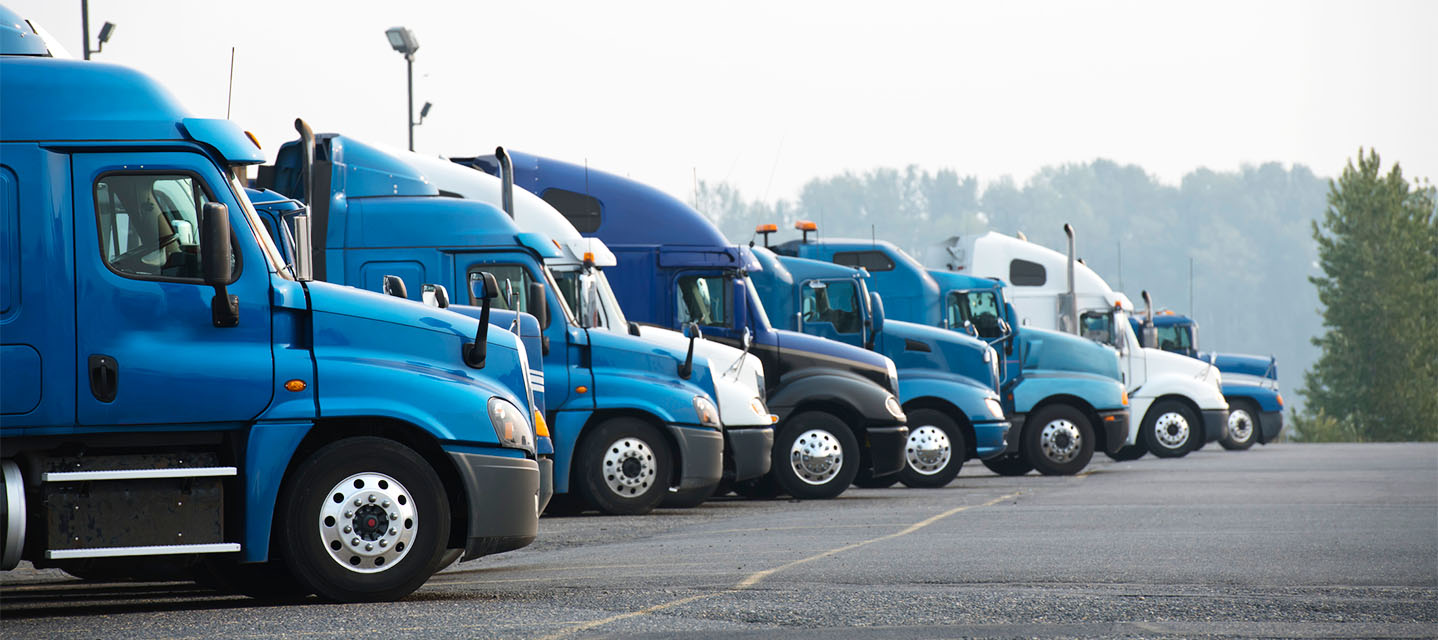Four key trends shaping the future of the transportation industry
Learn how your fleet can stay ahead of new challenges and navigate change in North American trucking.
By Geotab Team
May 9, 2024
Updated: Apr 4, 2025

Change is an ever-present part of the U.S. transportation industry. However, today’s business landscape is changing faster than ever, presenting both exciting opportunities and unprecedented challenges. Government investments in transportation infrastructure promise to streamline trucking and enable a greener future. New regulations targeting sustainability are important, but also pose new complexities, while nuclear verdicts are disrupting transportation companies of all sizes. The trucking workforce continues to make big strides, but also has new demands and needs.
Big changes are here and truck fleets need to be ready. Using insights shared by transportation industry leaders at Geotab Connect, including Chris Spear from the American Trucking Association (ATA), this blog will identify key trends impacting the U.S. trucking and transportation sector. These will help you navigate this evolving terrain and future-proof your transportation organization.
Seize the opportunities of Infrastructure Investment and Jobs Act funding
The most positive change to the American transportation industry is recent significant investments in infrastructure. The passage of the Infrastructure Investment and Jobs Act in 2021 included a $110 billion additional investment in U.S. road and bridge funding. This funding will rebuild the most economically significant bridges in the U.S. as well as thousands of smaller bridges. As ATA President Chris Spear put it, “We haven't seen that kind of investment in the United States in our infrastructure since the ‘50s.” This infrastructure funding will support transportation efficiency and safety nationwide.
Beyond bridges and roads, new infrastructure funding also offers new sustainability programs. The 2021 infrastructure bill provides $7.5 billion to fund EV charging infrastructure across the U.S. By expanding the country’s access to EV charging, the bill aims to encourage the adoption of electric heavy trucks and reduce reliance on fossil fuels in the transportation industry. To further support electric truck adoption, the Inflation Reduction Act of 2022 provides tax credits of up to $40,000 of an electric truck’s purchase price. States like California, Washington, and New York are also offering additional EV incentives.
Takeaway: As your company looks for ways to maximize your budget and replace aging vehicles, consider how new incentives for EV adoption can benefit your operations.
Manage the complexity of sustainability shifts in the transportation industry
The new public funding signals a major shift towards sustainability in transportation. But while sustainability is an important goal, the path to achieving it is full of regulatory complexity. As both state and federal governments ramp up efforts to prioritize transportation sustainability, trucking companies of all sizes should familiarize themselves with emerging regulations. For example, California's advanced clean fleet rules are driving the adoption of zero-emission vehicles (ZEV) while scaling back diesel trucks. In the near term, this means more diesel fuel will be available, but it’s wise for fleets to start considering how heavy duty electric vehicles can fit into their fleet in the future. .
As the combination of EV incentives and regulatory requirements continue, transportation companies can consider how to modernize their fleets with electric heavy trucks. Using telematics, they can identify aging ICE vehicles that are good candidates to replace with modern electric trucks, and also better understand the cost of charging infrastructure to replenish these trucks’ batteries when they’re parked. Transportation laws can vary widely from state to state, so it is important for trucking companies to communicate with state and federal lawmakers to navigate the regulatory landscape. As North Carolina Trucking Association CEO Ben Greenberg said, “At the state level, you can have an incredible impact. Work with your states, get involved in your state association. We're all family.”
Takeaway: New sustainability regulations help fleets remain proactive in how they plan for the greener future. Look into how your company can adapt to the sustainability landscape for the long haul.
Avoid litigation and protect your trucking company from nuclear verdicts
Although fleets are proactive in improving safety measures and stopping collisions before they happen, some are inevitable. Trucking companies know to budget for insurance costs and potential settlements, but recently we have seen a rise in nuclear verdicts. The peak of these high cost verdicts was a settlement of more than $1 billion for a 2021 nuclear verdict in Jacksonville Florida.
Verdicts of this size threaten the survival of even large transportation companies, putting medium- to small-sized trucking companies at even greater risk. Many states are debating legislation to curb the ability of trial lawyers to make aggressive claims and new laws have been passed to protect trucking companies from exorbitant lawsuits. Still, the threat of nuclear verdicts is real and requires proactive risk management. As Florida Trucking Association President Alix Miller advised: “With nuclear verdicts, my charge to my members, to even warehouses, grocery stores, is to document exactly what is happening.”
Takeaway: The threat of nuclear verdicts makes it more important than ever for your company to invest in fleet safety and accident prevention through proper maintenance and driver training.
Adapt to staffing challenges in transportation through diverse recruitment
Recruiting and retaining talent has long been a challenge in the transportation sector and this challenge increased with the COVID-19 pandemic. According to recent trucking industry statistics, driver shortages are forecast to double in 5 years.. Making this workforce challenge more complex, trucking unions are becoming more powerful and demanding more from transportation companies. Unions have an important role to play in advocating for truckers, but the balance between worker needs and company costs is trickier than ever to maintain.
To hire and retain these nearly 200,000 drivers, trucking companies must diversify recruitment strategies and attract a broader talent pool. For example, transportation companies should look into recruiting drivers among recent graduates who are looking for a fulfilling career that allows them flexibility and stability. Women are also an underrepresented demographic in the trucking industry, and many are drawn to the promising careers and independence that transportation jobs offer — if companies can address concerns around childcare during job training and female driver safety. Increasing safety measures benefits all drivers, as Nevada Trucking Association President Paul Enos described: “We do need to make this a safer industry for women [...] we're going to make it safer for everybody.”
Takeaway: A good way to address today’s staffing challenges in transportation is to focus recruitment on underrepresented groups and minorities.
Find the right transportation data partner to navigate today’s trucking challenges
As the transportation industry navigates today’s rapidly changing landscape, it’s vital to have data insights and expertise to power better decision making. As you look for a reliable partner to guide you through the evolving transportation landscape, Geotab offers comprehensive data solutions tailored to the specific needs of vehicle fleets. To learn how Geotab can help your fleet thrive in an evolving industry, visit our website.
Subscribe to get industry tips and insights
The Geotab Team write about company news.
Subscribe to get industry tips and insights
Related posts


The impact of unproductive idling on police vehicle service life
June 10, 2025
3 minute read

Multi-stop route planners: A fleet manager's guide + best tools in 2025
June 5, 2025
5 minute read

Commercial truck insurance cost: Rates by state + how to save
June 5, 2025
5 minute read

